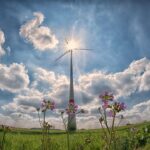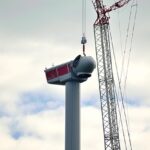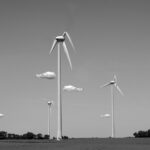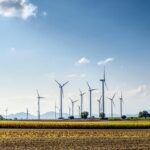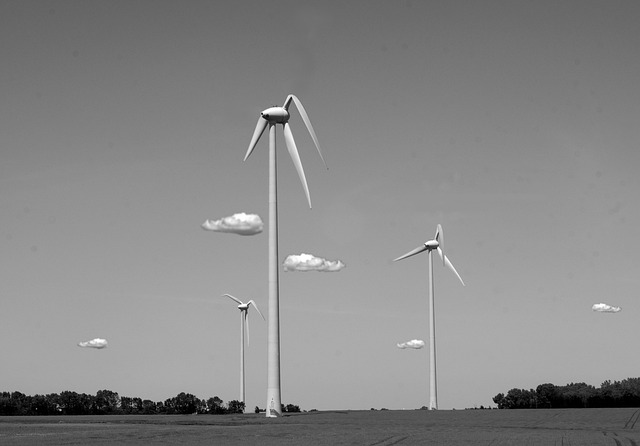Wind Power and Wildlife: Finding the Balance
As the world strives to transition to renewable energy sources, wind power has emerged as a crucial player in the fight against climate change. Harnessing the wind’s energy is not only an effective way to reduce greenhouse gas emissions but also represents a significant step towards sustainable energy practices. However, as wind farms proliferate across lands and coastlines, they pose potential threats to wildlife. The challenge lies in maximizing the benefits of wind power while minimizing its impact on ecosystems and biodiversity. This article explores the delicate balance between wind power development and wildlife conservation, examining the current landscape, challenges, and potential solutions.
The Growth of Wind Power
Wind energy has witnessed explosive growth over the past few decades. As of 2023, it accounts for a substantial portion of the global energy mix, with countries like the United States, China, and Germany leading the way in installed capacity. The advantages of wind power are numerous: it is clean, renewable, and increasingly cost-effective. Advances in technology have enabled more efficient turbines and better energy capture methods, making wind energy more competitive with traditional fossil fuels.
However, this rapid expansion has brought concerns about its impacts on local wildlife, particularly birds and bats, which may suffer fatal collisions with turbine blades. Furthermore, wind farms can disrupt local ecosystems, leading to habitat fragmentation and altering the behavior of wildlife. It is essential to address these issues while recognizing the need for renewable energy sources.
The Impact on Wildlife
Understanding the specific effects of wind power on wildlife is crucial for mitigating harm. Birds and bats are the most commonly affected species, with studies revealing varying mortality rates at different wind farm sites. Factors affecting these rates include turbine design, location, and the surrounding habitat.
Biodiversity and Habitat Loss
Beyond direct collisions, the installation of wind farms often leads to habitat loss. Large tracts of land may be cleared for turbine installation, access roads, and electrical infrastructure. This disruption can fragment habitats used by many species, making it difficult for them to find food, mates, or shelter. In some cases, sensitive species may be pushed to the brink of extinction if their habitats are not adequately protected or restored.
Bird and Bat Mortality
Bird mortality as a result of wind turbines has been a focal point of environmental concern. While estimates vary, studies indicate that hundreds of thousands to millions of birds may be killed each year due to collisions with turbine blades. Notably affected are raptors, songbirds, and migratory species, which may struggle to navigate through wind farms, especially if they are located along migration routes.
Bats are equally at risk. Research shows that they may be more susceptible to collision with wind turbines than birds. The causes of bat fatalities are complex; they may not only collide with the blades but may also suffer barotrauma, a condition where changes in pressure cause internal injuries when they fly near spinning turbine blades.
Challenges in Balancing Energy Needs with Wildlife Protection
The challenge of balancing the benefits of wind power with its potential adverse effects on wildlife is multifaceted. It requires collaboration among various stakeholders, including energy developers, conservationists, policymakers, and local communities. Key challenges include:
Regulatory Frameworks
Existing regulations for wind power development are often fragmented and vary greatly between regions. Some countries have robust guidelines for environmental assessments, while others lack comprehensive frameworks entirely. This inconsistency can lead to either excessive red tape that delays project implementation or insufficient oversight that allows significant environmental damage.
Data Gaps and Research Needs
There is still much to learn about the impacts of wind power on wildlife. Comprehensive data on species behavior, population dynamics, and migratory patterns is lacking, making it challenging to make informed decisions about wind farm placement and design. More targeted research is needed to assess the cumulative effects of wind energy on wildlife and ecosystems.
Public Perception and Socioeconomic Factors
Public perception of wind power can also complicate the balance between energy development and wildlife conservation. While many people support renewable energy, there are nuanced opinions regarding its environmental effects. Community opposition can arise if local populations believe that wind farms threaten local wildlife. Proponents of wind energy must engage seriously with communities to address their concerns and build support for renewable projects.
Finding Solutions: Mitigation Strategies
Fortunately, there are numerous strategies and technologies being developed to mitigate the impacts of wind energy on wildlife. The following points highlight some of the most promising approaches:
Site Selection
One of the most crucial factors in minimizing wildlife impacts is careful site selection for wind farms. Rigorous environmental assessments should be conducted to identify areas that are less likely to interfere with critical habitats, migration routes, and breeding grounds. Sites that have a low presence of sensitive species or prioritize previously disturbed lands are preferable candidates for wind projects.
Turbine Design Innovations
Technological advancements in turbine design are continually being developed to reduce wildlife fatalities. Newer turbine models feature larger rotor diameters that rotate more slowly, allowing birds and bats more time to react and avoid collisions. Additionally, adaptive management practices can help guide the operation of turbines in ways that further minimize impacts, such as temporarily shutting down turbines during peak migration times.
Monitoring and Research
Implementing rigorous monitoring programs is essential for understanding the effects of wind power on wildlife. Long-term studies can help identify trends in wildlife populations and mortality rates, providing the data needed for continuous improvement in wind farm operations. Innovative tracking technologies, such as GPS and radar, can be used to monitor bird and bat movements near wind farms and inform mitigation efforts.
Collaboration with Conservation Organizations
Building partnerships with wildlife conservation organizations allows energy developers to adopt best practices and learn from successful case studies. Collaborative approaches can lead to the development of site-specific management plans that effectively balance energy needs with wildlife protection. Engagement with local communities and stakeholders in the decision-making process fosters transparency and trust.
The Future of Wind Power and Wildlife Conservation
As nations continue to invest in renewable energy, the path forward must embrace sustainability not just in terms of energy production but also in wildlife conservation. The integration of environmental considerations into wind power projects should become standard practice rather than an afterthought.
Moreover, public support for wind energy can be bolstered by emphasizing its role in combating climate change while simultaneously safeguarding biodiversity. Educating communities about the ecological importance of balancing renewable energy development with wildlife preservation can foster greater acceptance and participation in projects.
Ultimately, finding a sustainable balance between wind power and wildlife will require commitment from all stakeholders involved. Comprehensive policies, innovative technology, and dedicated research are essential components of a future where wind energy can expand without compromising the health of our ecosystems.
Conclusion
Wind power represents a vital component of the world’s transition to sustainable energy. While it brings remarkable benefits in terms of reducing carbon emissions and providing clean energy, it is imperative that the implications for wildlife are taken seriously. Through thoughtful planning, innovative technologies, and collaboration, it is possible to harness the wind’s power while protecting the rich tapestry of life that shares our planet. The journey toward finding the balance between wind power and wildlife conservation is ongoing, but with dedication and teamwork, it is a challenge that can be met.
